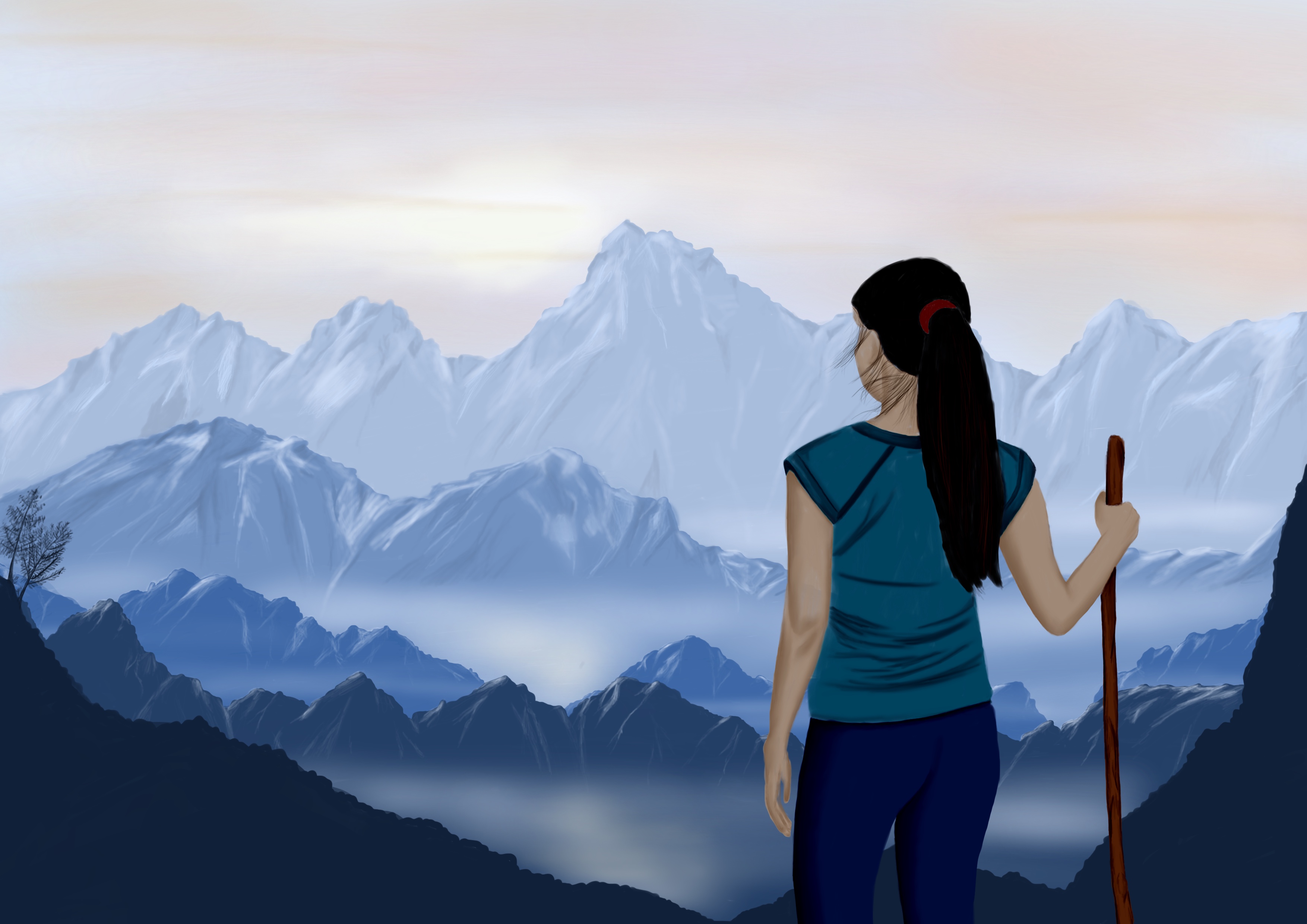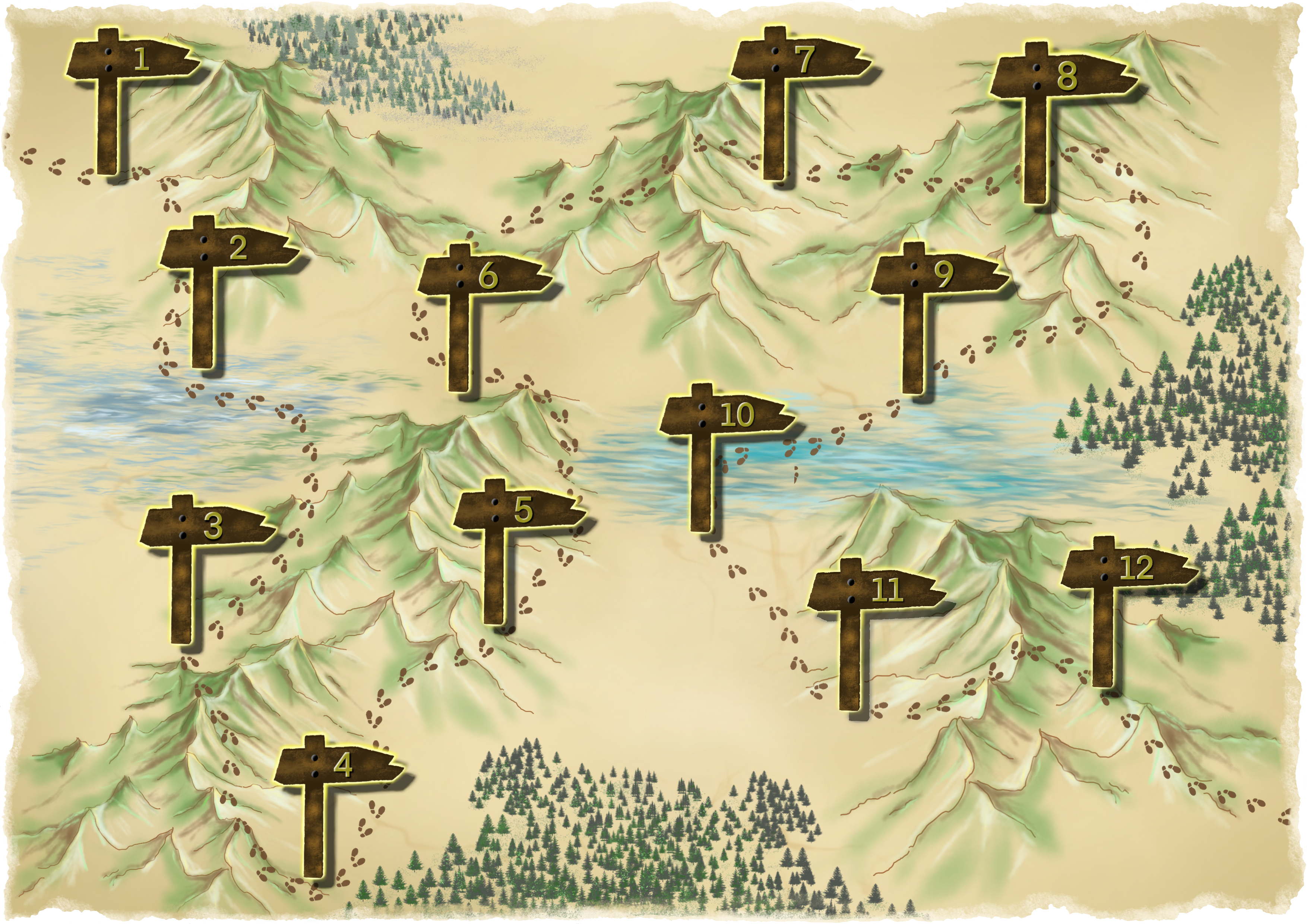The Mountains of Metaphor is an online interactive game based on Dr Williams’ PhD journey that visualises a working metaphor that she found useful. Here, she writes about how the project came into being and how it can be used by researchers as a shared visual metaphor.
Reflecting
It’s not often that we get the opportunity to reflect on long research projects. By this, I don’t mean writing a report for funders, or feeding back to various departments on outputs and impact. I mean, really, deeply, reflecting over a period of time about how the research has shaped us over the course of the project, and how we have grown as a result. I’m referring to the ways in which our research develops our sense of place in the community and our understanding of how we interact with it. I’m also referring to reflections that let us pass on knowledge and advice to those embarking on their own research journeys. Certainly in law there’s a startling lack of autoethnographic writing on the process of doing a PhD; a notoriously long and lonely journey even when everything is going well.[1]

I was lucky. Despite ups and downs with the institution I was enrolled at for those nine years, I was blessed with two wonderful supervisors, without whose encouragement, support, and friendship my own PhD journey would never have been completed. But not all research projects run smoothly. Not all relationships are so supportive. However, having kind, positive metaphors can make even the most difficult of journeys bearable. In a blog post for the SLSA, I explain how shifting from the unsupportive metaphor of “snakes and ladders” to the gentler, landscape-based metaphor allowed me to be kinder to myself when things were not quite going to plan. When life events threatened to derail my progress entirely, grounding myself back in the metaphorical landscape allowed me to remain focused on my goal – the summit – while attending to the needs of the present. Sometimes, the only thing to be done was to (metaphorically) find shelter, build a fire, and wait for the storm to pass. But that needn’t be a backward step. And it certainly didn’t mean that my brain was not subconsciously pondering conundrums. If you are anxious about deadlines, worried about “lost time” to holidays or life events, then you too might be (subconsciously) using an unhelpful metaphor.
Visualising the journey
For me, the opportunity to reflect on my PhD journey came in the form of an invitation from Emily Allbon to visualise my own research journey for her site TLDR.legal.[2] I had, in fact, been doing this for years thanks to some wonderful support from my mentor who was funded through DSA, but the mountains, views, caves, cliffs, swamps, and vistas had remained firmly in my head.[3] Having passed my viva in 2019, I decided to use this opportunity as a way of both sharing my own working mental models and visual metaphors and also developing my digital art skills. So, I began sketching out the paintings along with the accompanying narrative. Happily, returning to the paintings over many months and feeling that deep internal cringe at their amateur quality was a sure sign that my skills were indeed improving. The separate pieces were then stitched together into the interactive online game format by Howard Richardson, with actor Tegan Harris bringing the narrative to life with her incredible voiceovers.
The trickiest part was finding a balance between “over-“ and “under-sharing”: I wanted researchers to be able to see their journey in mine, so it had to be specific but without being too personal. Some of the anecdotes are based on my real-life experiences, and others take elements of my experience and extrapolate these in the way that one might create personas or vignettes, overlaying multiple events to create one combined account.

Seeing metaphors
While human thought processes are largely metaphorical, most metaphors that we use on a daily basis are so ubiquitous that they are invisible.[4] Making metaphorical mental models visible and tangible through a project like the Mountains of Metaphor not only offers a shared resource and common way of talking about life events and their impact on our research, but it highlights the tacit ways of thinking about our research that might be holding us back. Amanda Perry-Kessaris has written and blogged about Doing Sociolegal Research in Design Mode. She writes about how and why designerly approaches can construct enabling ecosystems for identifying and solving problems. These can let us approach problems in a practical, critical, and imaginative mindset, as well as through mechanisms that make processes visible and tangible. In visualising the metaphor that I found supportive for staying the course of the – very long – PhD, the Mountains of Metaphor takes a similar approach. However, instead of being applied to a substantive area of legal research, it applies these approaches to the processes of doing a PhD. It asks other researchers to imagine “what if” there was an alternative way of doing, talking, and thinking about how we approach our research journeys? It may not work for everyone. But if the resource helps one researcher communicate effectively, or feel less alone, I shall count the project a success.
Send us a postcard
Having a visual metaphor to be able to communicate about life’s challenges without needing to open up personally can offer alternative channels of communication. The supplementary resource pack includes a blank “map” page along with some mountains, trees, and lakes for researchers to visualise their own journeys. But this is only a starting point. You might like to think about other life events you’ve encountered on your research journey and how these could be represented as metaphorical landscape features. Why not draw on your start and end points, plot out your journey trajectory and your current position, and ask your supervisor or a good friend if they agree? Then, why not compare your map with those of others who might be walking your journey with you? Finally, send us a postcard!
Clare Williams
Visit the Mountains of Metaphor website
[1] Strictly speaking, the Mountains of Metaphor project is not a visual autoethnography. However, the process of making oneself vulnerable through revealing personal narratives in the hopes of reaching out to others or changing the world in some small way is the same.
[2] TLDR.legal, or the “less textual legal gallery”, showcases examples of legal design, or the use of visual approaches to make law more straightforward, accessible, engaging, and user-friendly.
[3] Disabled Student Allowance: in 2011, when I started my PhD, DSA-funded mentoring was available for students with disabilities. In the intervening years, allowances have been regularly pruned, meaning that the level of support I enjoyed is no longer available. One aspect of the Mountains of Metaphor project is “paying forward” the generous support I received to those who, following on behind me and through no fault of their own, are undertaking this journey without the support or resources I was able to access.
[4] The “main quest” – the focus on my research – is on the role of metaphors in how we do, talk, and think about legal and economic phenomena. The Mountains of Metaphor is more of a “side quest”, although it shares themes and methods.

